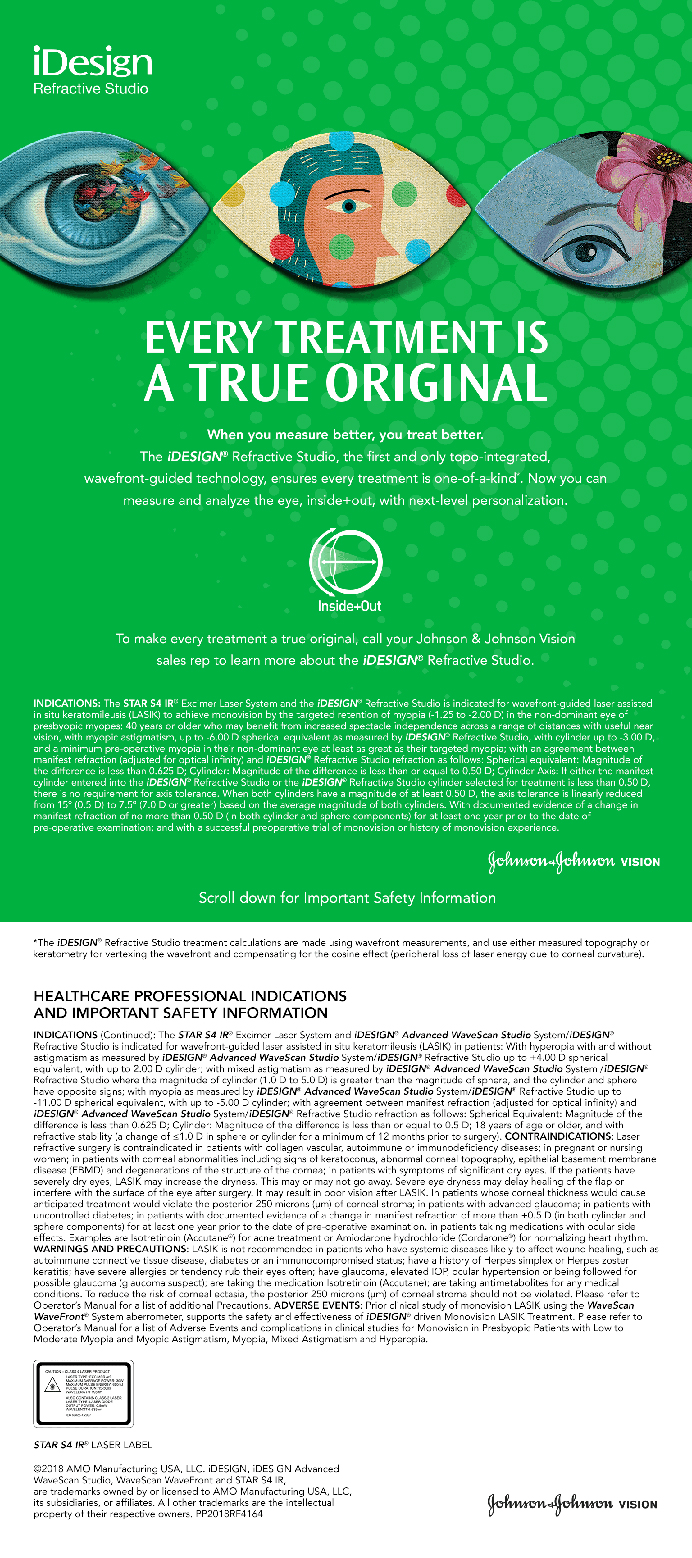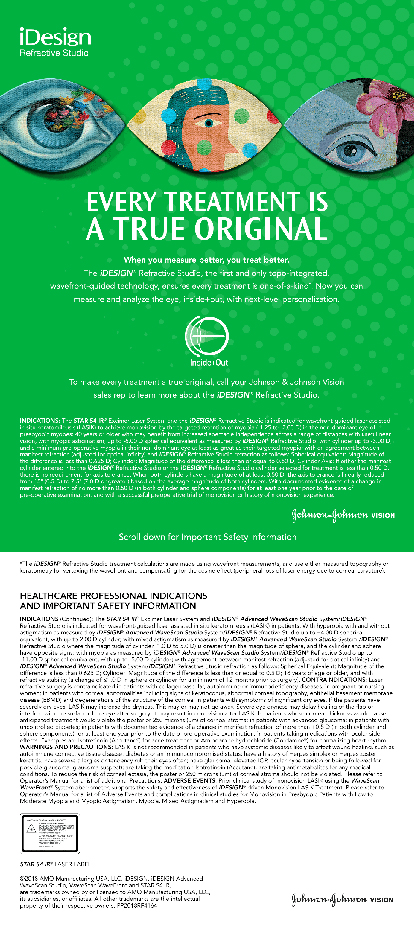In A Tale of Two Cities, Charles Dickens wrote, “It was the best of times, it was the worst of times.” Although he wrote that in the 1900s, he could very well have been talking about the current digital age. So much information is so easily accessible online that it’s a blessing and a curse all at the same time.
Anyone can look up symptoms, treatments, etc. And if you look long enough, you’re bound to find the answer you want to hear. We clinicians may like to believe that our patients listen to us, but we know that this is rarely the case when Dr. Google or Dr. Bing can be reached quickly and without a fee. Frankly, I have not seen a more insidious panoply of viewpoints about a medical procedure on the Internet than I have with regard to refractive laser surgery.
WHY THE HUSH?
LASIK has become the one name in our patients’ lexicons for almost every refractive surgical procedure. Patients don’t differentiate among photorefractive surgery, phakic IOLs, small-incision lenticule extraction, or, for that matter, cataract surgery or dysfunctional lens replacement. It’s always all about the LASIK!
This is in no small part due to marketing that was pervasive in the late 1990s—and, to a great extent, to the fact that LASIK is truly a formidable procedure that is capable of correcting a wide spectrum of refractive error. Arguably, LASIK, with its wavefront-correcting capabilities and minimal invasiveness, is one of the safest and most efficacious procedures available to our patients.
Yet how many of them actually know the benefits of this modern miracle that has captured the world’s attention for almost 3 decades? Why are we not talking more about refractive surgery? We might cite a number of reasons, but each seems unconvincing.
We can’t blame the economy. Think about the money your patients spend on onabotulinumtoxinA (Botox, Allergan), CoolSculpting (Allergan), and the phones they upgrade every few years.
Some ODs may not bring up refractive surgery with patients because they believe that contact lenses have gotten so much better. Again, check yourself. Yes, we have a greater array of lenses, and we acknowledge that contact lens intolerance is most likely a symptom of dry eye, but patients still want to declutter themselves from those plastic corneal covers.
Maybe you argue that people love their glasses now more than ever. Nerdy chic is the new LASIK?
I would argue that it is none of the above. Rather, I feel we are in a Möbius loop of complacency in the lanes. We don’t talk about refractive surgery, patients don’t inquire about it, so we don’t talk about it, and thus they don’t ask. We need to stop the insanity and break this cycle. Patients need to know about refractive surgery.
BREAKING THE CYCLE
It is important for us, as practitioners of eye care, to advocate for the refractive options of our patients. Think about how we treat presbyopic patients. Do most of us offer executive bifocals to the silver tsunami that is cresting on our office shores? No, we talk about how multifocal contact lenses and progressive lenses can help them function in the presbyopia-challenged time in which we are living. But I can attest that refractive surgery, specifically LASIK, is a guaranteed patient pleaser. And what better way to feel comfortable telling patients we have another great option than letting them hear it from other patients, directly or indirectly?
LET THE FINDINGS DO THE TALKING
One way to let other patients do the talking about LASIK is to introduce patients to the FDA’s Patient-Reported Outcomes With Laser in Situ Keratomileusis (PROWL) studies.1,2 These studies assessed patients’ experiences with LASIK by means of a questionnaire. PROWL-1 enrolled 262 active duty service personnel, and PROWL-2 enrolled 312 civilian patients from five centers across the country.
In the studies, patients answered 68 questions designed to validate their experiences with vision after LASIK. The PROWL questionnaire, which is now available on the FDA website (bit.ly/LASIKQOL) for all to use, ensured consistent collection of the patients’ experiences of visual and dry eye symptoms, their satisfaction after LASIK, their overall satisfaction with vision, and their daily functioning and well-being. These were real-life experiences.
This comprehensive look at patient experiences can be a spark to share with your patients. You can point out that in these studies both groups reported high satisfaction rates (between 96% and 99%). A small but significant subset of patients, those without symptoms before LASIK, experienced new visual symptoms such as glare, halos, starbursts, or mild, moderate, or severe dry eye symptoms at 3 months after surgery. Overall, however, the prevalence of visual symptoms and dry eye decreased after LASIK and improved over time. The most important takeaway from PROWL is that few patients reported that their symptoms affected their daily activities or well-being.
The results of the PROWL studies are great conversation starters with patients regarding their refractive options, regardless of their refractive status. Simply start by asking patients if they are interested in liberating themselves from glasses or contact lenses.
SHARE WHAT YOU KNOW
Although LASIK has the ability to correct the vast majority of refractive errors, there are many other options for aging patients who are interested in refractive surgical correction, including cataract surgery or refractive lens exchange. If you are confident about which procedure is best for a particular patient, then by all means share your recommendation with him or her. But, rather than trying to tailor a specific procedure for each patient, why not refer patients whose interest has been sparked in refractive surgery and let the surgical center handle that decision.
The bottom line is, it’s okay to recommend refractive surgery to your patients. With a good comanaging surgeon partner, you will see these patients again for routine eye care for the rest of their happy lives. Act in the best interests of your patients, and they’ll thank you for it when they return to your practice.
- Hays RD, Tarver ME, Spritzer KL, et al. Assessment of the psychometric properties of a questionnaire assessing patient-reported outcomes with laser in situ keratomileusis (PROWL). JAMA Ophthalmol. 2017;135(1);3-12.
- Eydelman M, Hilmantel G, Tarver ME, et al. Symptoms and satisfaction of patients in the patient-reported outcomes with laser in situ keratomileusis (PROWL) studies. JAMA Ophthalmol. 2017;135(1):13-22.





